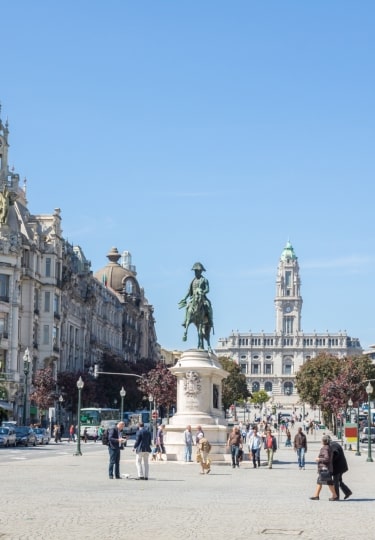Porto Baixa constitutes the core of Porto, Portugal’s pretty second city. Anchored around Avenida dos Aliados, a splendid and spacious avenue flanked by beaux-arts buildings, downtown Porto has long been a hub for financial institutes, social gatherings in snug restaurants, shopping for fresh produce, and animated annual celebrations.
Rather than being one distinct district, downtown Porto covers a cluster of bairros, or neighborhoods, and freguesias, or parishes. Combined, these constitute much of the historic center—excluding the riverside Ribeira zone—with Aliados and Bolhão being the most recognizable areas.
Set out on an amble across reasonably compact Porto Baixa, and you’ll soon stumble upon many of the city’s most cherished sights. From churches and a train station clad in azulejos, Portugal’s distinctive hand-painted ceramic tiles, to a personality-packed market and beautiful bookshop, experience the best of downtown Porto.
Attractions in Porto Baixa
Torre dos Clérigos & Igreja dos Clérigos
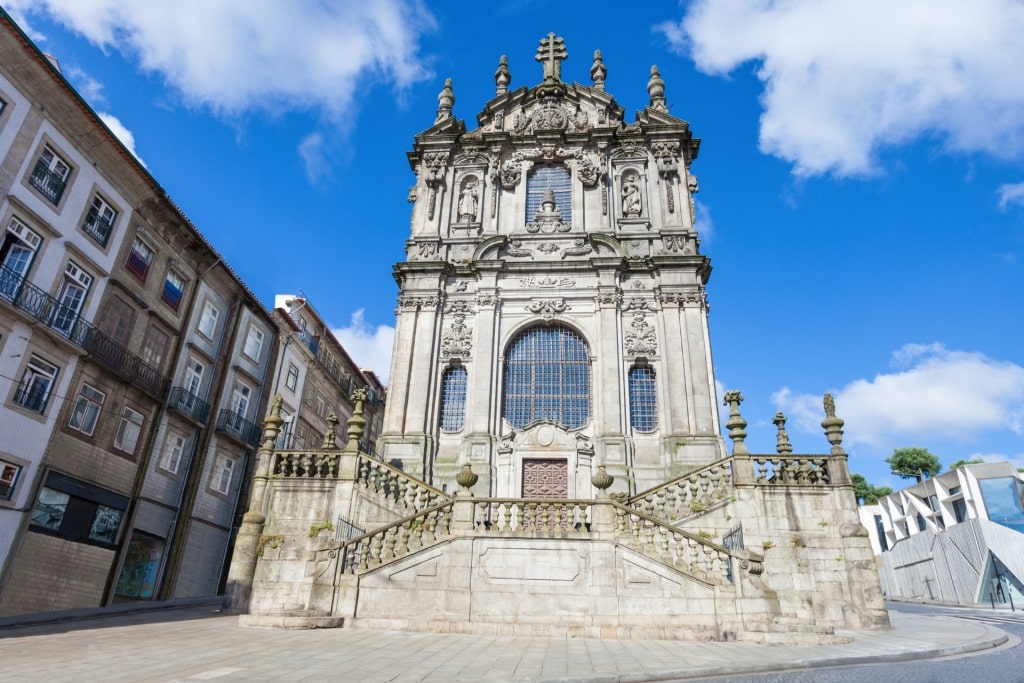
Igreja dos Clérigos
Completed in 1763, the Clérigos Tower is one of the best places to visit in Portugal. It has been downtown Porto’s skyline symbol for nearly three centuries.
Designed by Italian-born Nicolau Nasoni, the architect responsible for many of northern Portugal’s striking baroque buildings, the monumental 246-foot bell tower was a soon-added addition to the church below.
For far-reaching panoramas across Porto Baixa and beyond, prepare to climb the 200-plus narrow steps of the internal stone staircase. From the open-air viewing platform just below the bells, you can relish 360-degree views of russet rooftops and the Douro River.
After overworking your camera, peek inside adjacent Igreja dos Clérigos to appreciate the church’s marble altar, gilded embellishments, and domed ceiling. A separate, small museum, mainly displaying sacred art, is housed in the former infirmary and residence of the Brotherhood of the Clerics.
São Bento Station
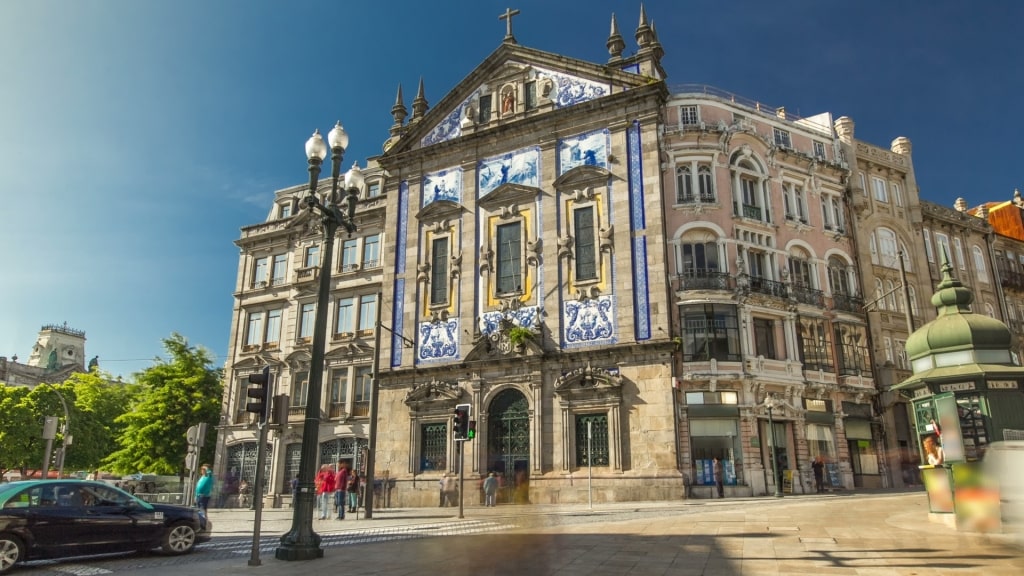
São Bento Station
No tickets are needed to appreciate the beauty of São Bento, Porto Baixa’s central train station. Step inside the resplendent ticket hall, and you’ll be greeted by 20,000 blue and white azulejos from the early 20th century.
Hand-painted by renowned artist Jorge Colaço, the almost floor-to-ceiling ceramic canvas depicts various scenes from Portugal’s past, maritime triumphs, and aristocracy.
Be bowled over by the intricate, history-defining images, such as those illustrating horses charging during the 12th-century Battle of Valdevez and the conquest of Ceuta, which signaled the start of Portugal’s empire-expanding Age of Discovery.
Avenida dos Aliados
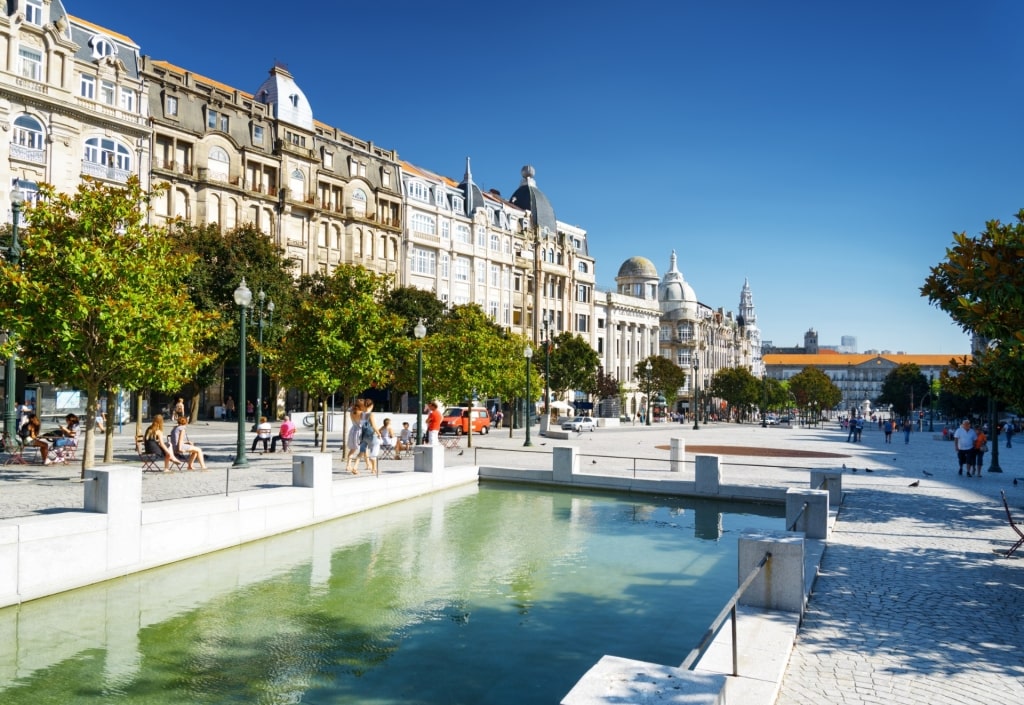
Avenida dos Aliados
Linking Porto City Hall with Praça da Liberdade, the grandiose Avenida dos Aliados is Porto Baixa’s main artery. The square-like boulevard is flanked by elegant beaux-arts and, to a lesser extent, neoclassical buildings constructed during the city’s 19th and 20th-century financial growth.
Though many of the former grand cafés and banking institutes have relocated, a short stroll along the avenue promises an architectural feast.
Some of the most notable buildings include the former A Nacional Insurance office, with its strikingly curved and statue-adorned facade, and the equally impressive Banco de Portugal. Even the avenue’s McDonald’s is often called the chain’s most beautiful branch due to its Eagle-crowned entranceway and stained-glass interior decor.
Teatro Nacional São João
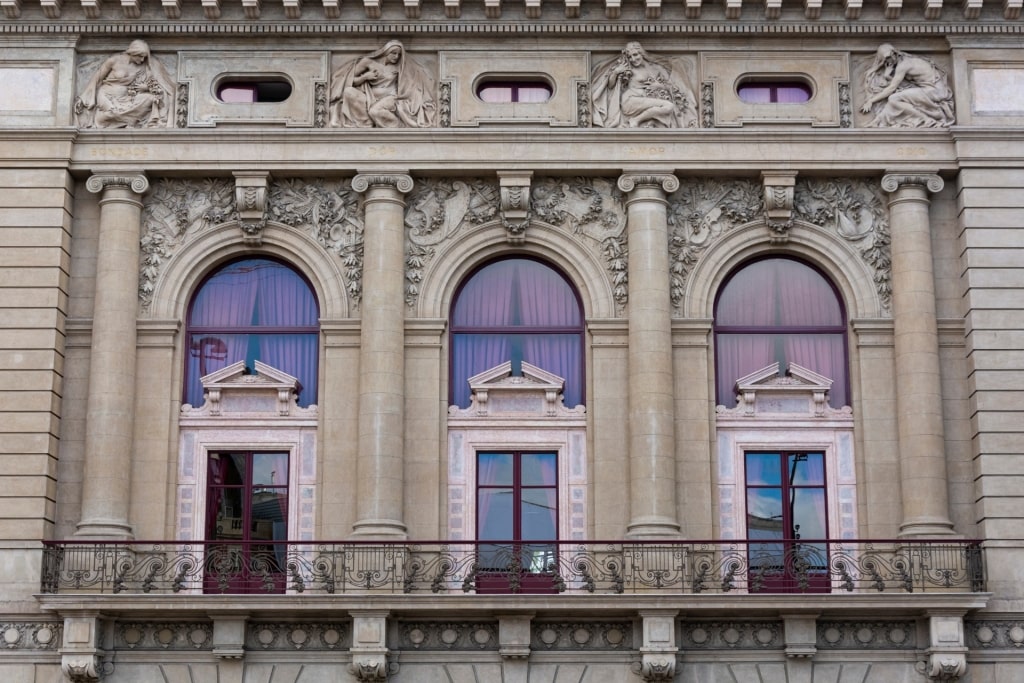
Teatro Nacional São João
The impressive, if not overly flashy, exterior of the Teatro Nacional São João disguises one of Porto’s most elegant cultural venues. Inside, a lush tapestry of gilding-decorated balconies, velvet curtains, and a frescoed-domed ceiling await.
Opened at the tail end of the 18th century as Porto’s principal performance venue, the theater tragically caught ablaze a little over a century later. Following an intensive restoration project, the theater reopened and later earned National Monument status.
While its excellent acoustics especially lend the venue to opera, there’s no need to attend a performance to value the lavish main hall. One-hour guided tours will take you through the public spaces before looking into this beloved theater’s behind-the-scenes areas and inner workings.
Sé

Sé
Although Sé, Porto’s Cathedral, technically crowns its own district of the same name, the city’s oldest neighborhood is subjectively part of Porto Baixa—especially considering it’s only a five-minute walk from São Bento Station.
A hulking and humbling building constructed in the 14th century, Sé is the city’s oldest religious space, though it has been remodeled numerous times since. The interior harmoniously blends gothic, renaissance, and baroque styles, and it is perhaps best known as the place where the great explorer Henry the Navigator was baptized.
Be sure to visit beyond the main hall and appreciate the serene gothic cloisters, where blue and white azulejo panels elevate the vaulted stonework.
Things to Do in Porto Baixa
Mingle with Traders at Mercado do Bolhão
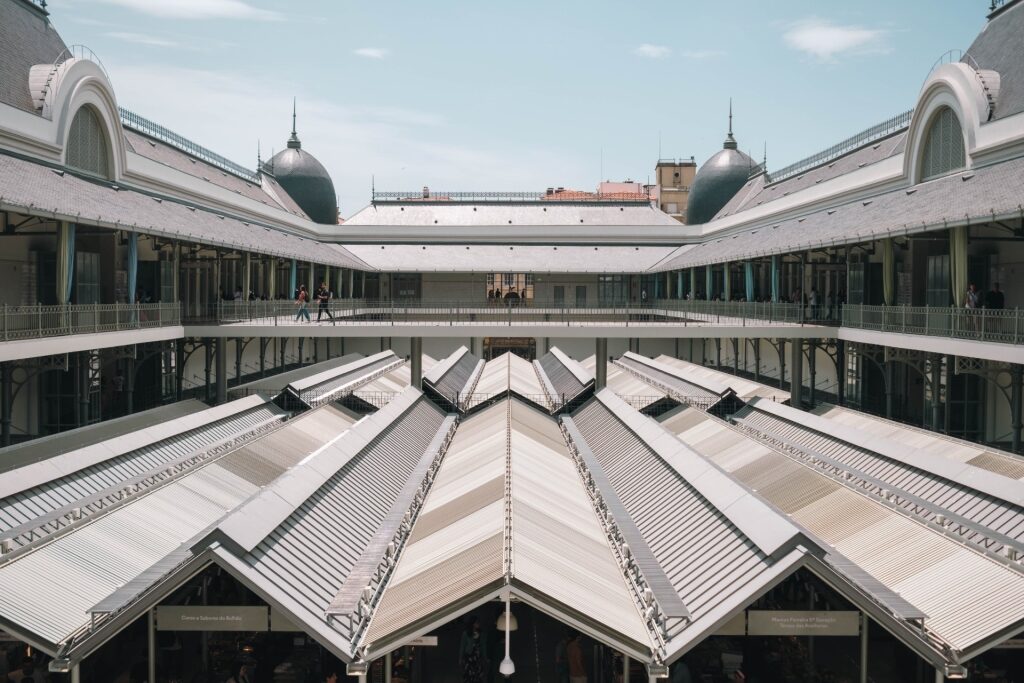
Mercado do Bolhão
Mercado do Bolhão has been downtown Porto’s social and shopping heart since 1914. Even before the construction of the neoclassical structure, farmers had been trading their produce at this open-air spot. Following an extensive restoration project, it reopened in 2022, with most stalls now covered and protected from the elements.
Clustering together an assortment of cafés and bars alongside the stalls, it’s an excellent location for a quick snack. Yet the best way to graze is by getting to know the market traders when strolling, sampling, and shopping.
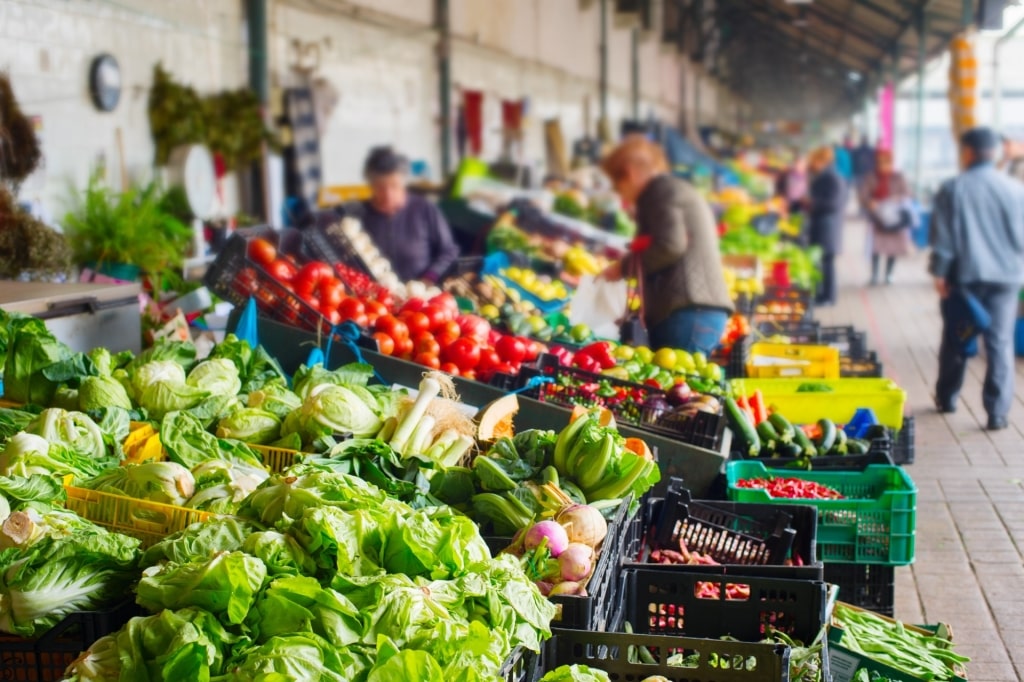
Mercado do Bolhão
If you wish to do so with a glass of port wine in hand, begin at Bolhão Wine House, where Hugo will recommend the perfect glass of Douro to pair your perusing.
Swing by Casa das Ostras for an on-ice crustacean sampling, buy some excellent charcuterie from Leandro—try presunto, or cured ham, from nearby Lamego—and flit between fetching flower stands before stocking up on canned sardines, the perfect taste of Portugal to give as gifts back home.
Tour Porto Baixa’s Azulejo-Adorned Architecture
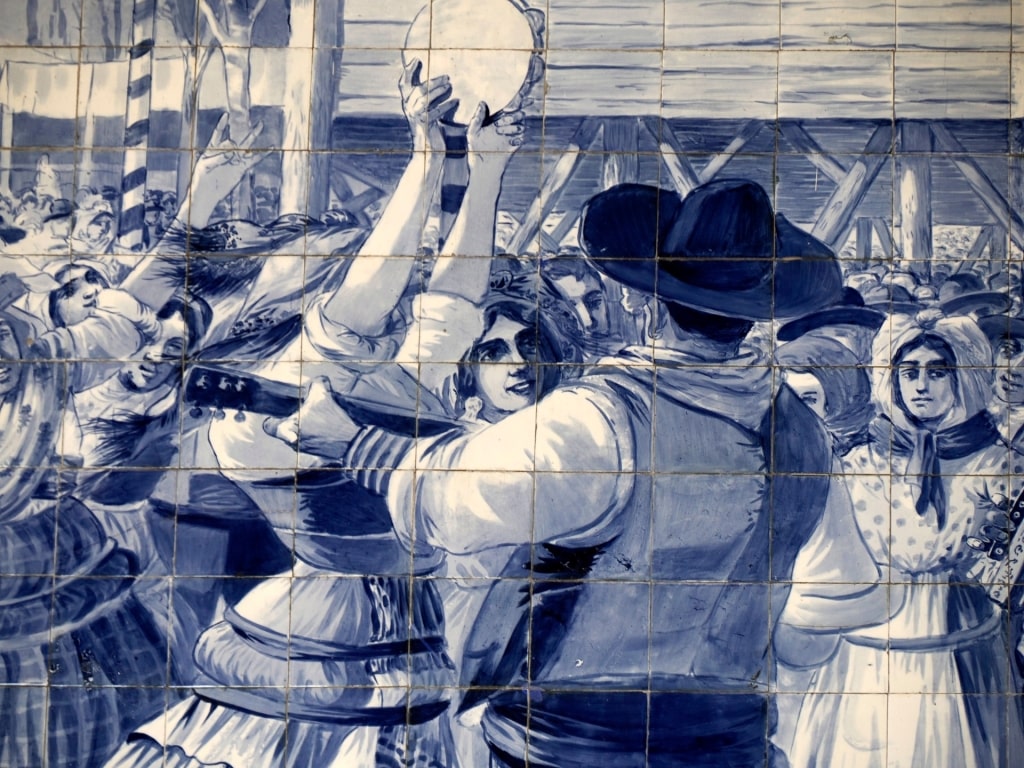
Azulejo tiles in São Bento Station
For a deeper dive into Portugal’s artistic and historic hand-painted tiles, there’s no better place in the city to explore than downtown Porto. Wander between the zone’s trio of azulejo-adorned churches, a former ceramic warehouse, and the small city museum, and you’ll practically cover each corner of the district.
The best place to begin is the former palace housing Banco de Materiais, part of the Museu da Cidade. In the consolidated space, some of Porto’s oldest and most ornate ceramic tiles are displayed alongside rarer individual pieces that are no longer viewable outside. The building also acts as a repository, visited by builders seeking a square or two of an intricate pattern when renovating buildings.
Nearby, the neo-Arabic style facade of Antigo Armazém-Mostruário da Fábrica Cerâmica Devesas, with its patterned ochre tiles and gold-edged window arches, is one of the city’s best azulejo examples.
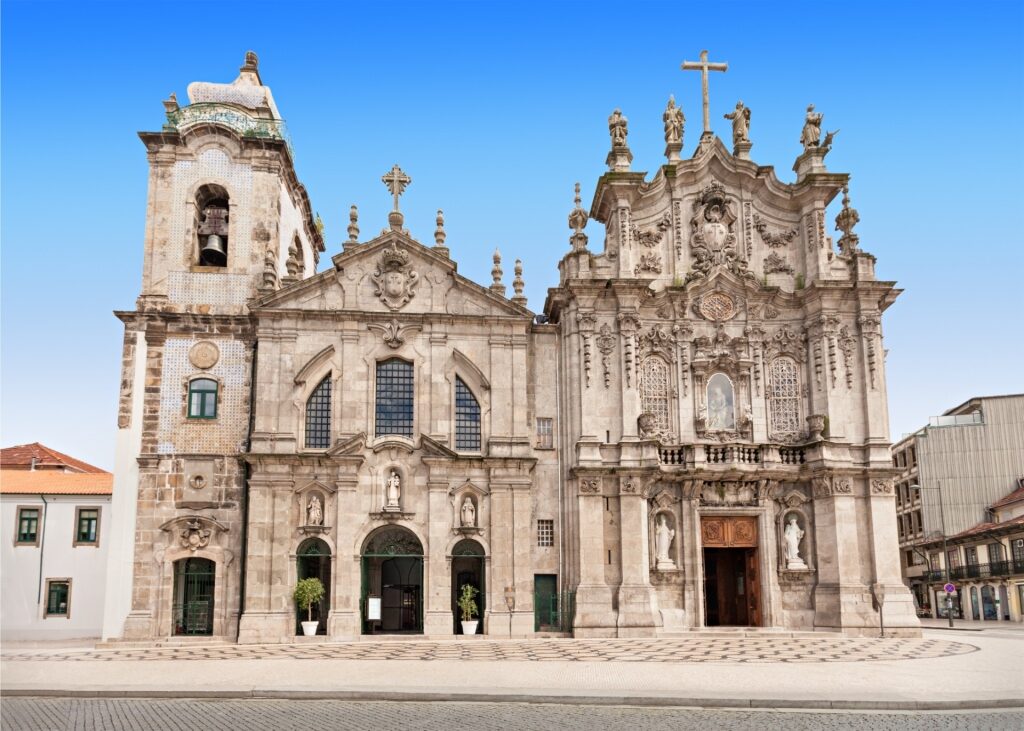
Igreja do Carmo
Afterward, visit the three spellbinding churches, all coated with blue and white ceramic scenes. See the sacred tiles on the side of Igreja do Carmo, added in 1912 to the twin-towered Baroque and Rococo building. Then, cross downtown to Igreja de Santo Ildefonso, clad with 10,000 tiles by Jorge Colaço.
The grand finale comes at corner-wedged Capela da Almas, embellished with a nearly 16,000-tile masterpiece since 1929. The bewitching display represents the lives of Saint Francis of Assisi and Saint Catherine.
Buy a Book at Livraria Lello
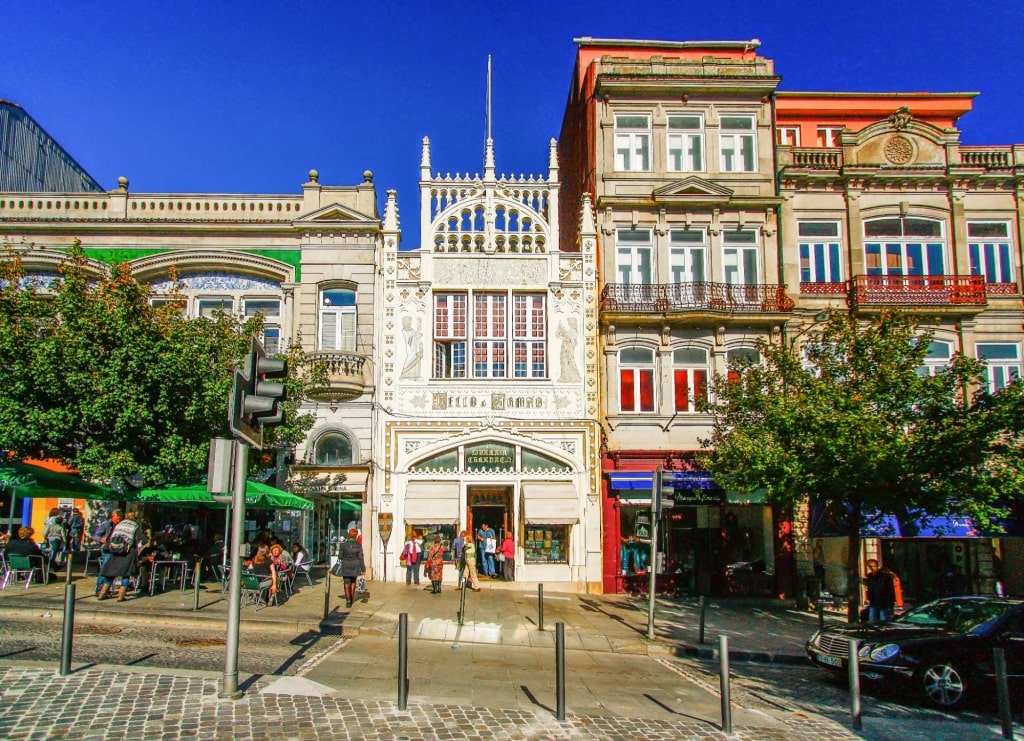
Livraria Lello
Regularly accoladed as the world’s most beautiful little bookstore, Livraria Lello may have found international fame for its looks rather than its books, but that doesn’t distract from its historical importance.
Opened in 1906 as both a publishing house and retail space, the neo-gothic building was fully renovated and restored to its former glory in 2016. Embellished with a mosaic-decorated facade, a dark paneled interior, a centerpiece double staircase, stained glass, and ornately carved ceilings under the mezzanine, it truly deserves its title.
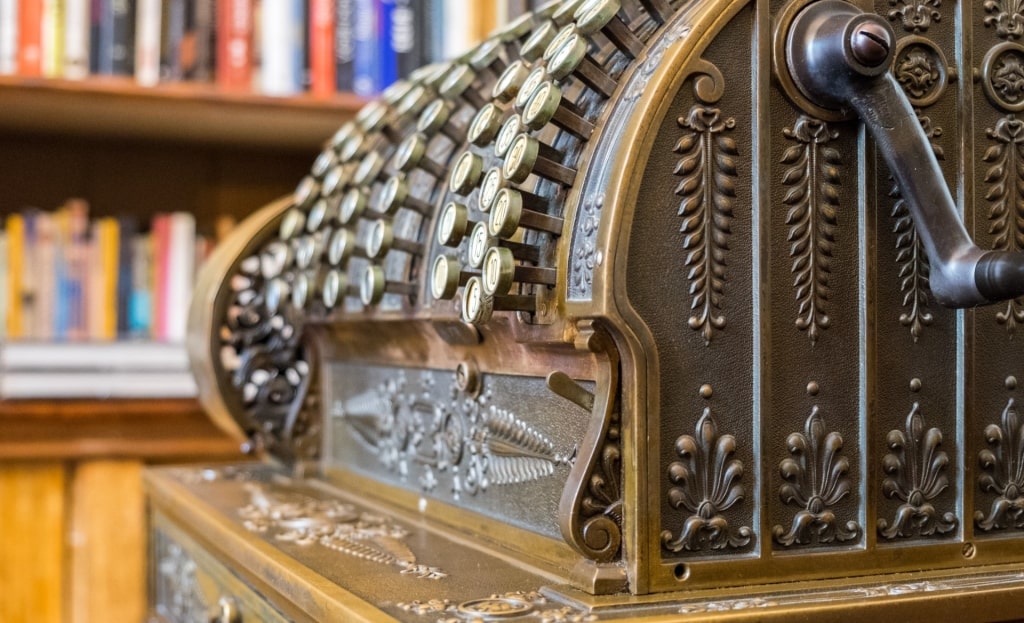
Livraria Lello
Visiting Livraria Lello is one of the most popular things to do in Porto, so much so that the bookstore now operates on a ticketed system. Booking a timeslot at least a few days in advance is necessary. While an opening-time visit might seem the best idea, the store soon fills as the long queues filter in; often, visiting later in the afternoon can be slightly calmer.
You can offset your ticket towards a purchase, and the adorable array of Lello branded Portuguese miniatures, translated into English, make fantastic souvenirs and gifts. If you’d prefer a more peaceful browse of the bookshelves, Porto Baixa’s oldest bookshop, Moreira da Costa, is a few streets away.
Pause for Coffee at Majestic Café
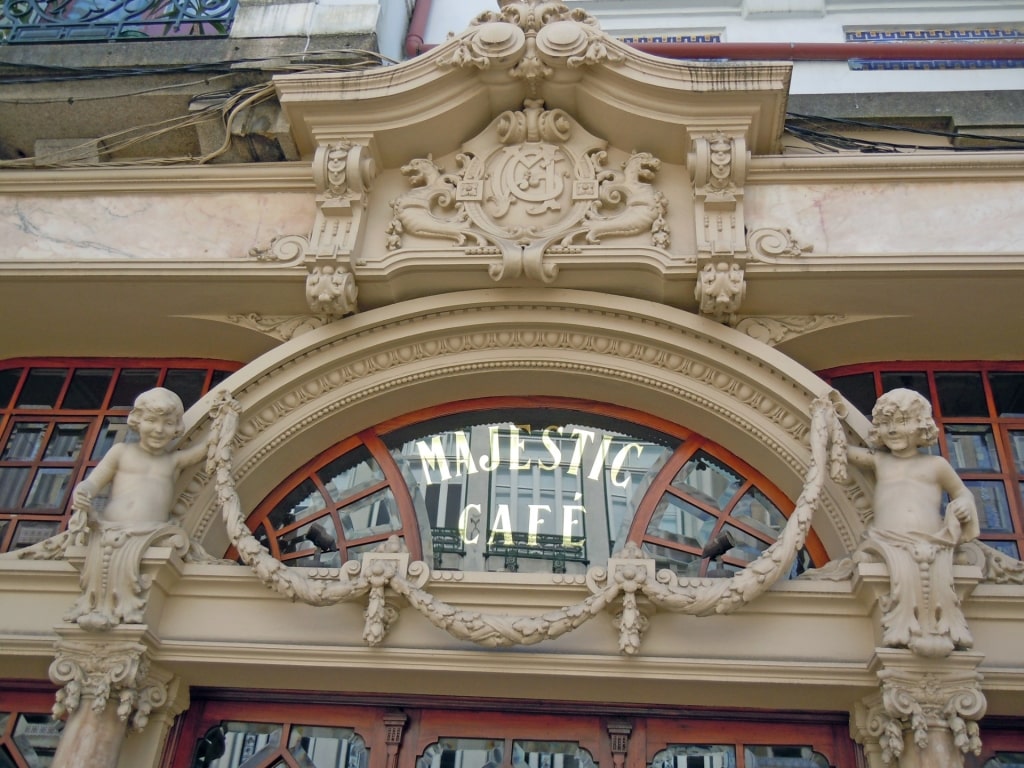
Majestic Café
Since opening its elegant doors in 1922—bar a brief interlude of neglect and closure—Majestic has been Porto’s premier café. Inspired by grand Parisian coffee houses, the Art Nouveau building is the star of pedestrianized Rua Santa Catarina.
Step inside, and you’ll be transported to a gorgeous Belle Époque main room, with polished marble floors and table tops, wall-covering mirrors, vintage light fittings, a baby grand piano, and suited servers adding further pizzazz.
Settle into the leather benches between the marble columns and soak it all in over a coffee and Pastel de Nata, the custard tarts that Portugal is famous for, for a taste of Porto’s bygone days.
Shop Portuguese Brands on Rua das Flores
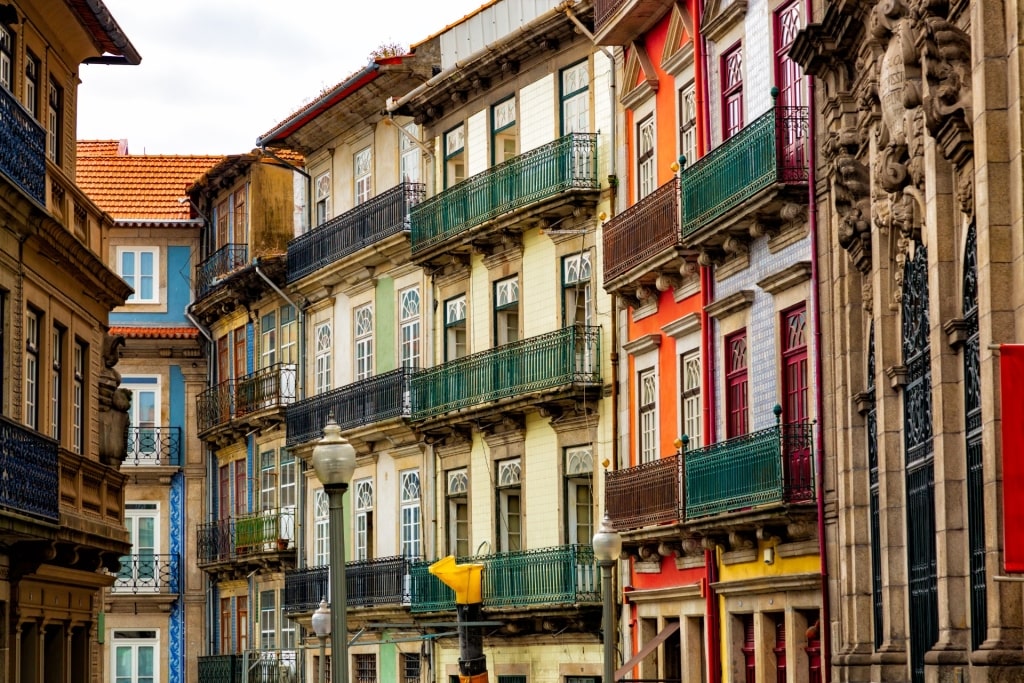
Rua das Flores
Snaking away from São Bento Station towards the lower Ribeira district, Rua das Flores is one of Porto Baixa’s prettiest streets. It’s also one of the city’s most historically important trading lanes, serving as a center of commerce for over 500 years.
While much has changed over the last five centuries, and many storefronts are now souvenir-focused, taking a stroll from top to bottom will allow you to see the Porto of old and new. Once known as Rua do Ouro, after the many goldsmiths who operated in the small stores, you can still see examples of the craft at long-standing Ourivesaria Coutinho.
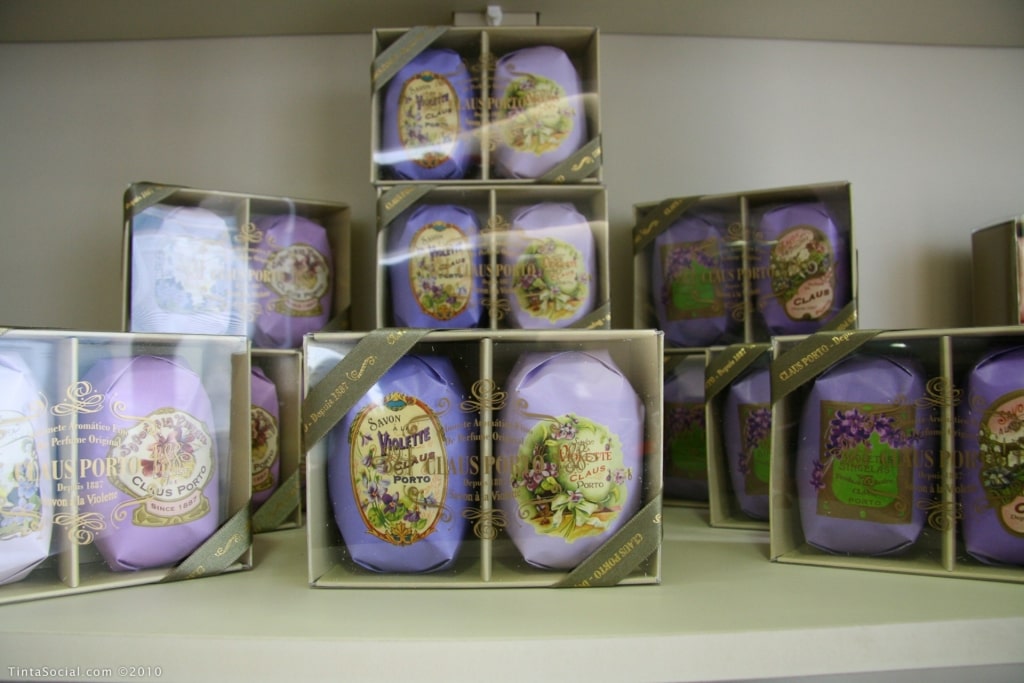
Claus Porto Photo by Tinta Social on Wikimedia Commons, licensed under CC BY 3.0
Livraria Chamine da Mota, an antique bookstore, and the local luxury soap and cosmetic brand Claus Porto are two other important stores sitting side by side, illustrating the contrast between the more traditional and renovated architecture.
At the street’s southern end, the small plaza just beyond Baroque Igreja da Misericórdia provides the perfect people-watching pause. Take a seat on the terrace of Flôr Bar for a pastry, coffee, or expertly crafted cocktail and watch the world go by, often soundtracked by street performers.
Restaurants
A Regaleira
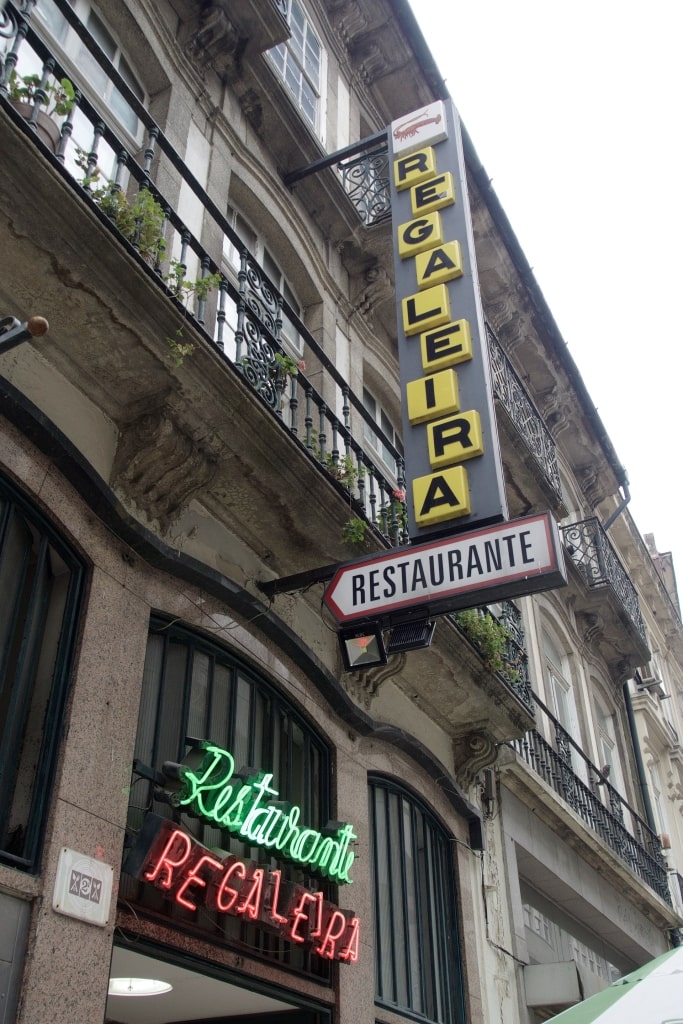
A Regaleira Photo by Etienne Girardet on Flickr, licensed under CC BY-SA 2.0
Porto’s signature sandwich, the meat-heavy, gravy-soaked Francesinha, is a must-try dish. And where better to sample it than A Regaleria, its birthplace? Invented in the 1950s following a trip to France, the Croque Monsieur-inspired dish is the star of this recently rehomed restaurant. However, you’ll find plenty of other typical plates on the menu if you’d prefer a lighter lunch.
Casa Viúva
With a minuscule sign and less-than-obvious entranceway, it’s easy to overlook this neighborhood favorite, popular with local workers seeking a fair-priced lunch. You’ll want to arrive early to snag a table.
Wholesome service and silver plates heaped with home-style cooking, including all of Portugal’s staples, such as bitoque, egg-topped beef steaks, and whole grilled fish, make this one of Porto Baixa’s most intimate and unfussy dining spots.
Letraria
While wine and Port have long defined Porto Baixa’s bars, the city center’s burgeoning craft beer scene can’t be overlooked. Letraria, a brewery founded by two university friends in northern Portugal, operates two excellent tap rooms in downtown Porto. The shaded beer garden in the original branch, a short stroll from Mercado do Bolhão, is the best pick on a warm day.

Craft beer
Their ever-growing array of tap beers, ranging from the expected to more inventive guava-infused Goses and passion fruit IPAs, pair perfectly with the menu of stacked burgers and traditional Porto dishes, including Francesinhas.
Time Out Market
Opened in 2024 following the success of Lisbon’s well-established outpost, Porto’s Time Out Market occupies the left wing of São Bento Station, spilling out onto a sunny courtyard. It hosts a dozen curated restaurants—only established chefs are invited to open branches in the market—and offers everything from market-fresh seafood to inventive vegetarian dishes.
It’s an excellent venue to sample recipes created by the likes of Vasco Coelho Santos, Rui Paula and Ricardo Costa, who all operate Michelin-awarded kitchens elsewhere in the city.
Travel Tips
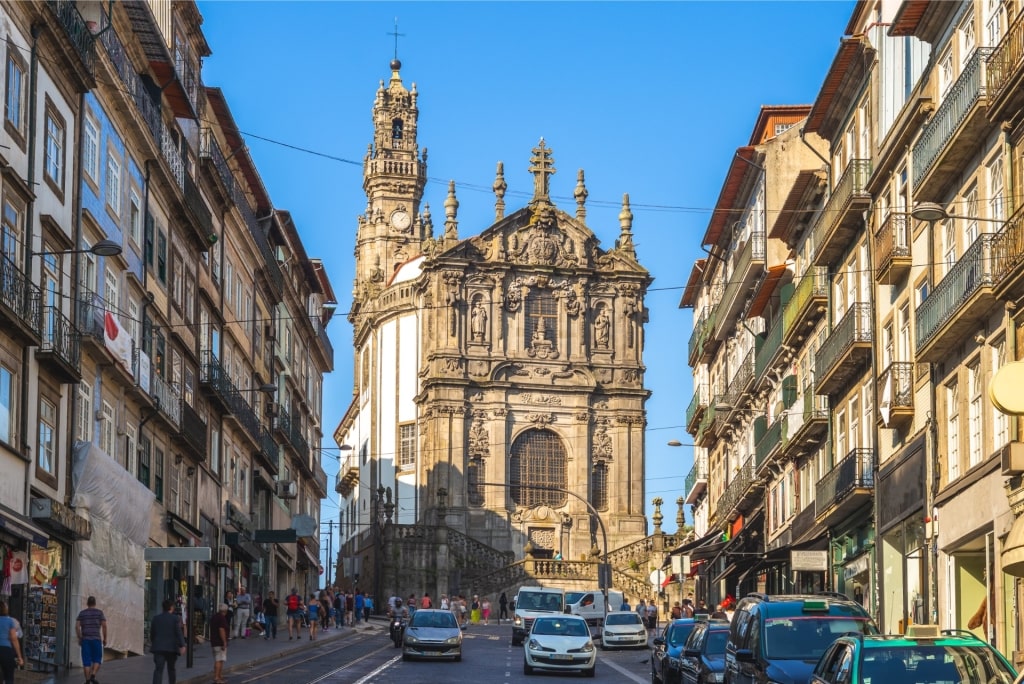
Igreja dos Clérigos
Porto Baixa is generally flat and best explored on foot—the whole district can be crossed in around 30 minutes. Porto’s Metro, trams and buses do circulate within Baixa; however, you’ll rarely need to travel more than one or two stops to reach the next attraction.
Comfortable shoes suitable for walking on Porto Baixa’s cobbles and polished calçadas, Portugal’s patterned pavements, are a must, as is a tote bag for shopping in the market. Layers are recommended, as Porto can be a little chilly on cloudy days. If you’re visiting in early spring or late autumn, an umbrella hopefully won’t be needed, but it is worth packing.
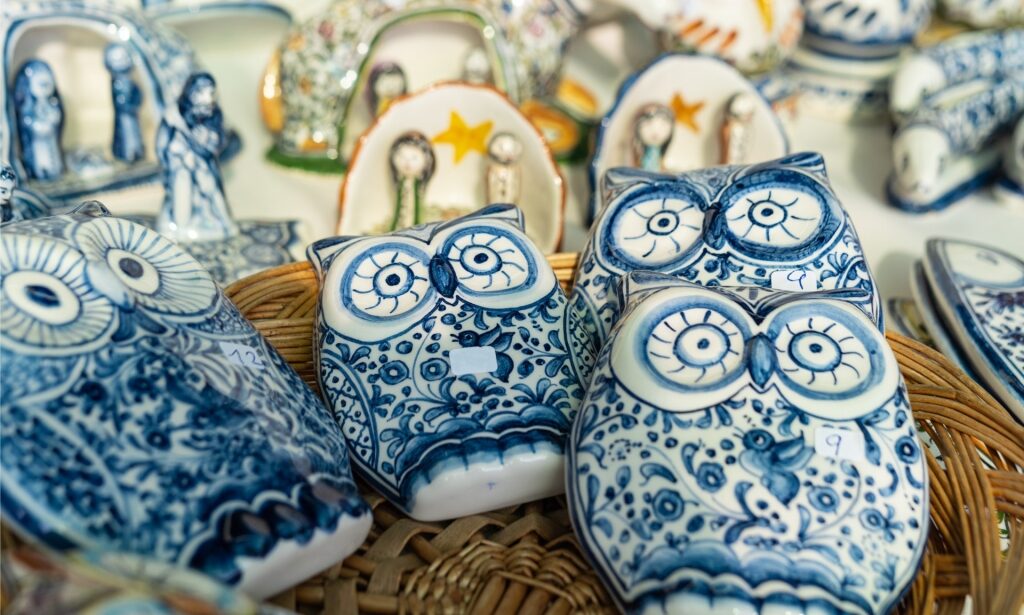
Azulejo souvenirs
Many of the city’s oldest, family-run shops are located in Porto Baixa, selling age-old crafts that make fantastic souvenirs and gifts. Century-old Armazém dos Linhos is an excellent location to buy embroidered linens and textiles in all forms, from handbags to tea towels.
Azulejos and ceramic boutiques are also prevalent downtown, ranging from upscale, national brands like Visit Alegre to independent studios, such as Oficina Gato Bravo. For expert advice and a wide range of conservas, or canned fish, wines and ports, A Favorita do Bolhão—not to be confused with the same-named stall in Mercado do Bolhão—has been the go-to since the 1930s.
Read: Best Beaches in Porto
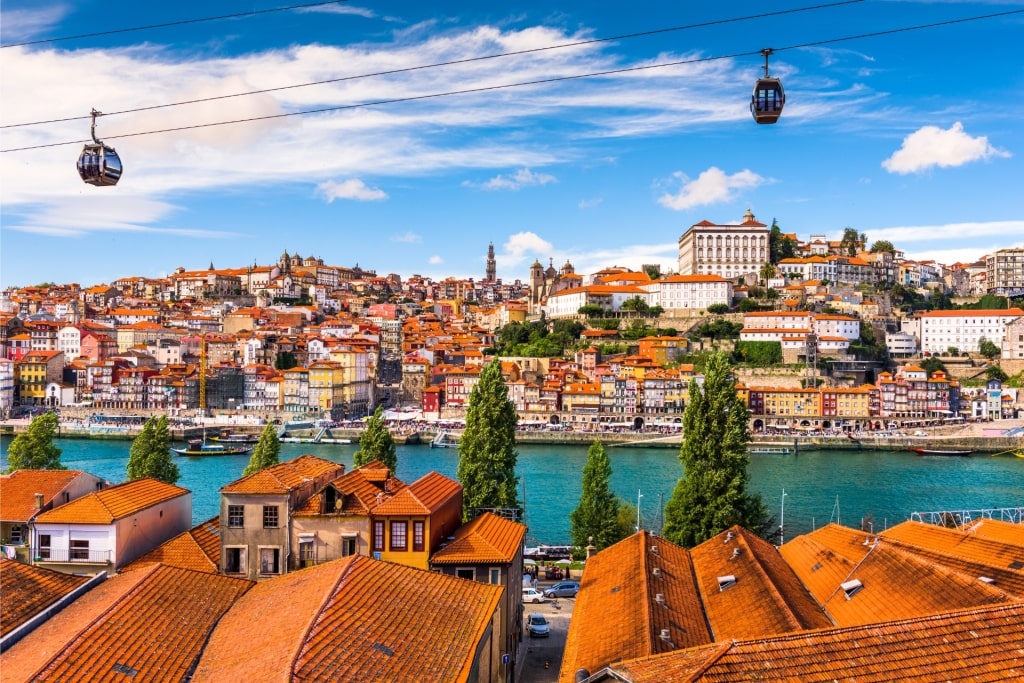
Porto
Excited to discover the best of Porto Baixa? Peruse Celebrity’s cruises to Porto to start planning your perfect vacation to Portugal.
